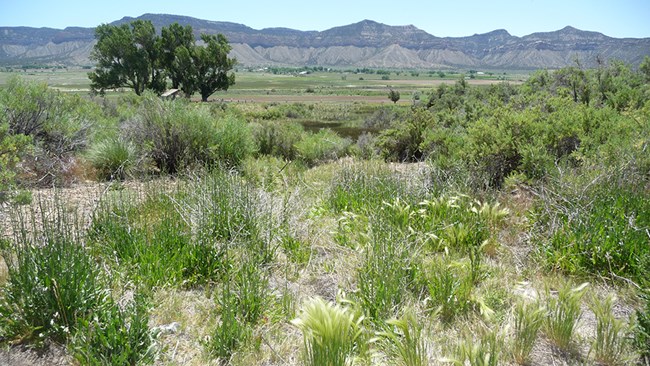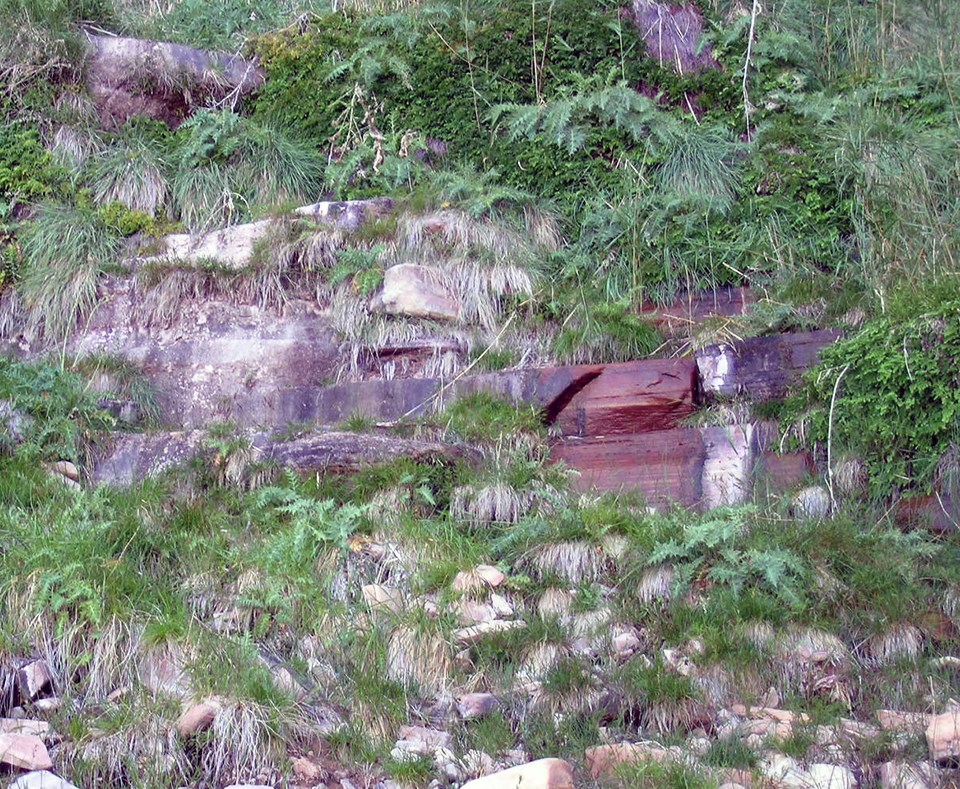
NPS / SCPN
SCPN Monitoring Sites Webmap (NPS staff only)
In semi-arid regions, such as the Colorado Plateau, springs and seeps occupy a tiny fraction of the landscape but support high rates of plant growth, biodiversity, and unique plant communities. They also provide refugia for migrating birds and can serve as the primary source of water for more extensive riparian habitats.
However, springs in arid and semi-arid regions are also focal points for human activity. Surface and groundwater diversions, livestock grazing, and recreation have widespread impacts on spring ecosystems. An inventory of 103 springs on the Arizona Strip found that over 90% had some type of development for human, livestock, or game use. Because of their importance in maintaining biodiversity and plant growth, and the continued exploitation of these rare resources by humans, the Southern Colorado Plateau Network (SCPN) and network parks have selected spring ecosystems for long-term monitoring.
Spring ecosystems are dependent upon groundwater. The persistence and quantity of water available at a spring site are primary factors that determine the extent of riparian and aquatic habitat available to biotic communities. The vegetation and wildlife supported by springs are important structural components of these ecosystems. SCPN parks protect a wide variety of spring types. They include springs that form vertical seeps and support hanging gardens; springs that result in a flowing channel; springs that gush out from a cliff wall; and springs on hillsides with a diffuse flow.

NPS / SCPN
Monitoring Objectives
The goal of the SCPN springs monitoring program is to determine long-term trends in hydrologic and vegetation dynamics in spring ecosystems. In particular, we want to know how these trends change in the face of changes in ecological drivers, stressors, and processes. Currently, thresholds for change in spring ecosystems on the Colorado Plateau are unknown.
Vital Signs and Metrics
SCPN parks have identified three vital signs and associated metrics for this project. Not all metrics will be measured at every spring.
1. Water quantity
-
Median and range of flow
-
Variance of flow
-
Length of flowing channel (up to 50 m)
2. Water quality
-
pH (median and range)
-
specific conductance (median and range)
-
temperature (median and range)
3. Vegetation
-
richness by nativity
-
wetland status
-
life form cover by nativity
-
life form wetland:upland cover ratio
Monitored in These Parks and Springs
- Canyon De Chelly National Monument – Wild Cherry Cattail, Tsaile, Many Cherry, Twin Trail Canyon, and Bare Rock
-
Glen Canyon National Recreation Area – Waterpocket Fold, Horseshoe Canyon, and East End
-
Navajo National Monument – Betatakin
-
Wupatki National Monument – Heiser
-
Yucca House National Monument - Aztec
Monitoring Project Status
Scientists completed an inventory of 79 springs in and near parks across the Colorado Plateau in 2005. Additional springs were inventoried in 3 parks from 2006 to 2010. The Springs Monitoring Protocol Implementation Plan for Park Units in the Southern Colorado Plateau Network was published in 2018. SCPN parks are expected to make final decisions about which springs to monitor in December 2018.
Project Contact:
Matthew Johnson, Program Manager
References
Springer, A., L. E. Stevens, and R. Harms. 2006. Inventory and Classification of Selected National Park Service Springs on the Colorado Plateau. Final report submitted to: Lisa Thomas, Southern Colorado Plateau I&M Network, and Dr. Angela Evenden, Northern Colorado Plateau I&M Network. Fort Collins, Colorado.
Reports and Publications
Perkins, D. W., R. Wissinger, M. Moran, Steve Monroe, H. Thomas, L. McCoy, and E. Soles. 2018. Springs Monitoring Protocol Implementation Plan for park units in the Southern Colorado Plateau Network. Natural Resource Report NPS/SCPN/NRR—2018/1771. National Park Service, Fort Collins, Colorado.
Last updated: February 6, 2025
